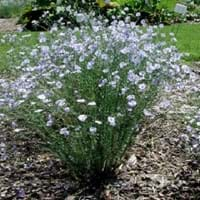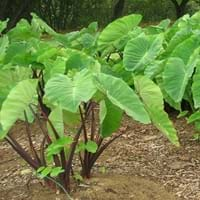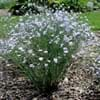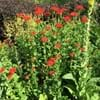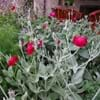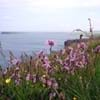Type
Perennial
Tender Perennial
Origin
Europe, Asia
Southeastern Asia
Types
Winged flax, Bristle flax, Fairy flax
Eddoe taro, Dasheen taro
Number of Varieties
Not Available
Habitat
Cultivated Beds
agricultural areas, Hillside, Warm and moist climatic conditions
USDA Hardiness Zone
4-8
10-11
Sunset Zone
2a, 2b, 3a, 3b, 4, 5, 6, 7, 8, 9, 10, 11, 13, 14, 15, 16, 17, 18, 19, 20, 21, 22, 23, 24
H1, H2, 22, 23, 24
Habit
Clump-Forming
Clump-Forming
Flower Color
Blue, Sky Blue
White, Green
Flower Color Modifier
Bicolor
Not Available
Leaf Color in Spring
Green, Blue Green
Dark Green, Ivory
Leaf Color in Summer
Green, Blue Green
Dark Green, Ivory
Leaf Color in Fall
Green, Blue Green
Dark Green, Ivory
Leaf Color in Winter
Light Green
Dark Green, Ivory
Leaf Shape
Narrow
V-Shaped
Plant Season
Summer
Spring, Summer, Fall, Winter
Sunlight
Full Sun, Partial Sun, Partial shade
Partial shade, Full Shade
Type of Soil
Loam, Sand
Loam, Sand
The pH of Soil
Neutral, Alkaline
Acidic, Neutral
Soil Drainage
Well drained
Well drained
Bloom Time
Early Summer, Summer
Indeterminate
Tolerances
Drought
Heat Tolerance, Humidity, Salt and Soil Compaction, Shallow soil
Where to Plant?
Ground
Container
How to Plant?
Seedlings
From Rhizomes
Plant Maintenance
Medium
Medium
Watering Requirements
Average Water Needs, Requires watering in the growing season
Needs 2-3 times watering per week, Needs a lot of water initially
In Summer
Lots of watering
Lots of watering
In Spring
Moderate
Moderate
In Winter
Average Water
Average Water
Soil pH
Neutral, Alkaline
Acidic, Neutral
Soil Type
Loam, Sand
Loam, Sand
Soil Drainage Capacity
Well drained
Well drained
Sun Exposure
Full Sun, Partial Sun, Partial shade
Partial shade, Full Shade
Pruning
Midseason Pruning, Prune in fall, Remove damaged leaves, Remove dead branches, Remove dead leaves
No pruning needed
Fertilizers
All-Purpose Liquid Fertilizer
All-Purpose Liquid Fertilizer, Less fertilizing
Pests and Diseases
Red blotch
Aphids, Rats, Snails
Plant Tolerance
Drought
Heat Tolerance, Salt and Soil Compaction, Shade areas
Flowers
Yes
Insignificant
Flower Petal Number
Single
Not Available
Foliage Texture
Fine
Bold
Foliage Sheen
Matte
Glossy
Attracts
Bees, Butterflies, Flies
Aphids, Bugs, Not Available, Snails
Allergy
Cyanide poisoning
Swelling in mouth, Throat itching
Aesthetic Uses
Showy Purposes
Showy Purposes
Beauty Benefits
Good for skin
Poison Ivy, Skin cleanser, Weightloss
Environmental Uses
Air purification
No fertilizer, pesticides, or herbicides needed, Prevent weeds
Medicinal Uses
Antirheumatic, Carminative, Emollient, Ophthalmic, Poultice, Stomachic
Aging, Laxative, Weight loss
Part of Plant Used
Flowers, Seeds
Leaf Stalks, Leaves
Other Uses
Cosmetics, Fibre, For making oil, Used in paper industry
Used As Food, Used as Ornamental plant
Used As Indoor Plant
Not Available
No
Used As Outdoor Plant
Yes
Yes
Garden Design
Mixed Border, Rock Garden, Wall, Wildflower
Container, Feature Plant, Groundcover, Houseplant, Mixed Border, Tropical
Botanical Name
LINUM perenne
ALOCASIA micholitziana
Common Name
Perennial Flax, Blue flax, Alpine flax
Elephant Ear, Taro
In Hindi
Blue Flax Plant
अरवी
In German
Blaue Flachspflanze
Colocasia (Pflanzengattung)
In French
Bleu lin Plante
Colocasia
In Spanish
Planta de lino azul
Colocasia
In Greek
Μπλε Λίνο Φυτών
Colocasia
In Portuguese
Planta do linho azul
Colocasia
In Polish
Niebieski roślin lnu
Kolokazja
In Latin
Blue linum Planta
Colocasia
Phylum
Magnoliophyta
Magnoliophyta
Class
Magnoliopsida
Liliopsida
Clade
Angiosperms, Eudicots, Rosids
Angiosperms, Monocots
Tribe
Not Available
Colocasiodeae
Subfamily
Not Available
Aroideae
Number of Species
Not Available
Importance of Blue Flax and Taro
Want to have the most appropriate plant for your garden? You might want to know the importance of Blue Flax and Taro. Basically, these two plants vary in many aspects. Compare Blue Flax and Taro as they differ in many characteristics such as their life, care, benefits, facts, etc. Every gardener must at least have the slightest clue about the plants he wants to plant in his garden. Compare their benefits, which differ in many ways like facts and uses. The medicinal use of Blue Flax is Antirheumatic, Carminative, Emollient, Ophthalmic, Poultice and Stomachic whereas of Taro is Aging, Laxative and Weight loss. Blue Flax has beauty benefits as follows: Good for skin while Taro has beauty benefits as follows: Good for skin.
Compare Facts of Blue Flax vs Taro
How to choose the best garden plant for your garden depending upon its facts? Here garden plant comparison will help you to solve this query. Compare the facts of Blue Flax vs Taro and know which one to choose. As garden plants have benefits and other uses, allergy is also a major drawback of plants for some people. Allergic reactions of Blue Flax are Cyanide poisoning whereas of Taro have Swelling in mouth and Throat itching respectively. Having a fruit bearing plant in your garden can be a plus point of your garden. Blue Flax has no showy fruits and Taro has no showy fruits. Also Blue Flax is flowering and Taro is not flowering . You can compare Blue Flax and Taro facts and facts of other plants too.
